The pleura is a connective tissue sheath that covers which of the following organs?
Liver
Heart.
Spleen
Lung
Correct Answer : D
The pleura is a double-layered serous membrane that covers each lung and lines the thoracic cage
The pleura is a vital part of the respiratory tract.
Its role is to cushion the lung and reduce any friction that may develop between the lung, rib cage, and chest cavity.
Each pleura (there are two) consists of a two-layered membrane that covers each lung.
The layers are separated by a small amount of viscous (thick) lubricant known as pleural fluid.
The pleura is comprised of two distinct layers: the visceral pleura and the parietal pleura.
The visceral pleura is the thin, slippery membrane that covers the surface of the lungs and dips into the areas separating the different lobes of the lungs (called the hilum).
TEAS 7 Exam Quiz Bank
HESI A2 Exam Quiz Bank
Find More Questions 📚
Teas 7 Questions: We got the latest updated TEAS 7 questions
100% Money Refund: 100% money back guarantee if you take our full
assessment pass with 80% and fail the actual exam.
Live Tutoring: Fully customized live tutoring lessons.
Guaranteed A Grade: All students who use our services pass with 90%
guarantee.
Related Questions
Correct Answer is A
Explanation
Triple point.
In a phase diagram, the term used for a substance held at a temperature and pressure where the solid, liquid, and gaseous states of a substance exist simultaneously is the triple point.
The triple point is a unique point on a phase diagram where the three states of matter (solid, liquid, and gas) can coexist in equilibrium.
At the triple point, the temperature and pressure of the substance are fixed.
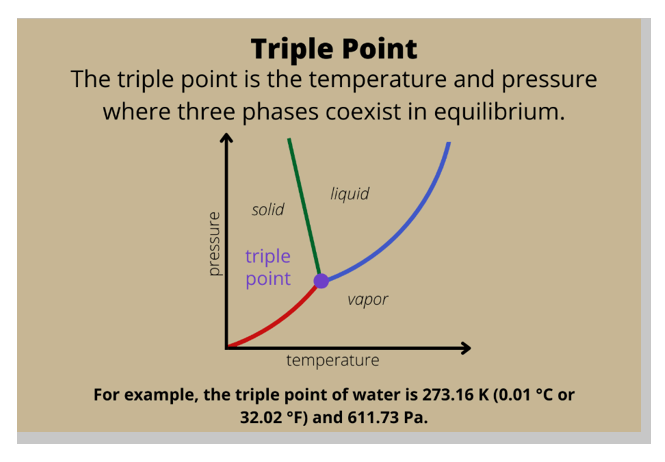
Option B, critical temperature, is the temperature at which a gas cannot be liquefied, regardless of the pressure applied.
It is a characteristic property of a substance and is typically higher than the boiling point of the liquid at standard pressure.
Option C, critical point, is the point on a phase diagram where the liquid and gas phases of a substance become indistinguishable.
At the critical point, the distinction between the liquid and gas phases disappears, and the substance becomes a supercritical fluid.
Option D, absolute zero, is the theoretical temperature at which all matter has zero thermal energy.
At absolute zero, all substances are in their solid state, but it is not relevant to a phase diagram, as it is a temperature where no transitions between states occur.
In summary, the term used for a substance held at a temperature and pressure where the solid, liquid, and gaseous states of a substance exist simultaneously in a phase diagram is the triple point, whereas the other options provided are not relevant or are characteristic properties of substances in different contexts.
Correct Answer is D
Explanation
The pleura is a double-layered serous membrane that covers each lung and lines the thoracic cage
The pleura is a vital part of the respiratory tract.
Its role is to cushion the lung and reduce any friction that may develop between the lung, rib cage, and chest cavity.
Each pleura (there are two) consists of a two-layered membrane that covers each lung.
The layers are separated by a small amount of viscous (thick) lubricant known as pleural fluid.
The pleura is comprised of two distinct layers: the visceral pleura and the parietal pleura.
The visceral pleura is the thin, slippery membrane that covers the surface of the lungs and dips into the areas separating the different lobes of the lungs (called the hilum).
Correct Answer is B
Explanation
The hypothesis should be modified to include the new findings that worm infestation can relieve the effects of certain autoimmune disorders.
A possible modification could be: “Parasitic worm infestation can have both damaging and beneficial effects on the host.
While it can cause harm, it has also been found to reduce the severity of certain autoimmune disorders.”
Choice A.
Worm infestation prevents the body from immune malfunction is not correct because it overstates the findings and implies that worm infestation completely prevents immune malfunction, which is not supported by the evidence.
Choice C.
Worm infestations exacerbate the body’s immune reactions is not correct because it contradicts the new findings that worm infestation can relieve the effects of certain autoimmune disorders.
Choice D.
Lack of worm infestations is the cause of some autoimmune disorders is not correct because it overstates the findings and implies a causal relationship between lack of worm infestations and autoimmune disorders, which is not supported by the evidence.
Correct Answer is C
Explanation
Bag mass change is the dependent variable in this experiment.
In an experiment, the dependent variable is the variable that is being measured and is expected to change in response to changes in the independent variable(s).
In this case, the bag mass change is being measured and is expected to change in response to changes in the independent variable (sucrose concentration).
Choice A is incorrect because duration is not a variable in this experiment.
Choice B is incorrect because temperature is not a variable in this experiment.
Choice D is incorrect because sucrose concentration is an independent variable, not a dependent variable.
An independent variable is a variable that is manipulated by the experimenter to see how it affects the dependent
Correct Answer is C
Explanation
ff.
In this cross, both parents are homozygous recessive for the smooth leaf trait
(ff).
This means that all of their offspring will inherit two copies of the recessive allele (f) and will therefore have smooth leaves.
Choice A.
FF x FF is not correct because both parents are homozygous dominant for the fuzzy leaf trait (FF) and all of their offspring will inherit two copies of the dominant allele (F) and will therefore have fuzzy leaves.
Choice B.
Ff x Ff is not correct because both parents are heterozygous for the leaf trait (Ff) and their offspring can inherit either one dominant allele (F) or one recessive allele (f) from each parent, resulting in a 3:1 ratio of fuzzy to smooth leaves. Choice D.
Ff x ff is not correct because one parent is heterozygous for the leaf trait (Ff) while the other is homozygous recessive (ff), resulting in a 1:1 ratio of fuzzy to smooth leaves in their offspring.
Correct Answer is C
Explanation
Osmosis is the movement of water molecules across a selectively permeable membrane from an area of higher water concentration to an area of lower water concentration.
In a hypertonic solution, the concentration of solutes outside the cell is higher than inside the cell, so water flows out of the cell through aquaporins embedded in the plasma membrane to balance the concentration gradient.
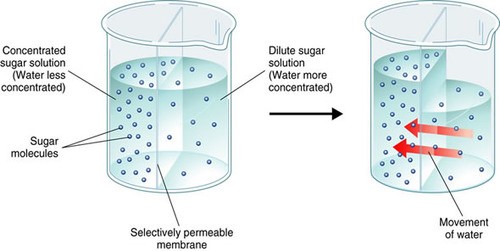
Choice A.
Facilitated diffusion is not correct because it is a type of passive transport that involves the movement of molecules across a membrane through specific transport proteins, but it does not specifically refer to the movement of water molecules.
Choice B.
Active transport is not correct because it is a type of transport that involves the movement of molecules against their concentration gradient and requires energy in the form of ATP, but osmosis is a passive process that does not require energy.
Choice D.
Diffusion is not correct because it refers to the movement of molecules from an area of higher concentration to an area of lower concentration, but it does not specifically refer to the movement of water molecules.
Correct Answer is B
Explanation
The corpus luteum is a structure that develops in the ovary after an egg has been released.
It secretes the hormone progesterone, which prepares the uterus for a fertilized egg to implant and helps maintain the uterine lining during pregnancy1.
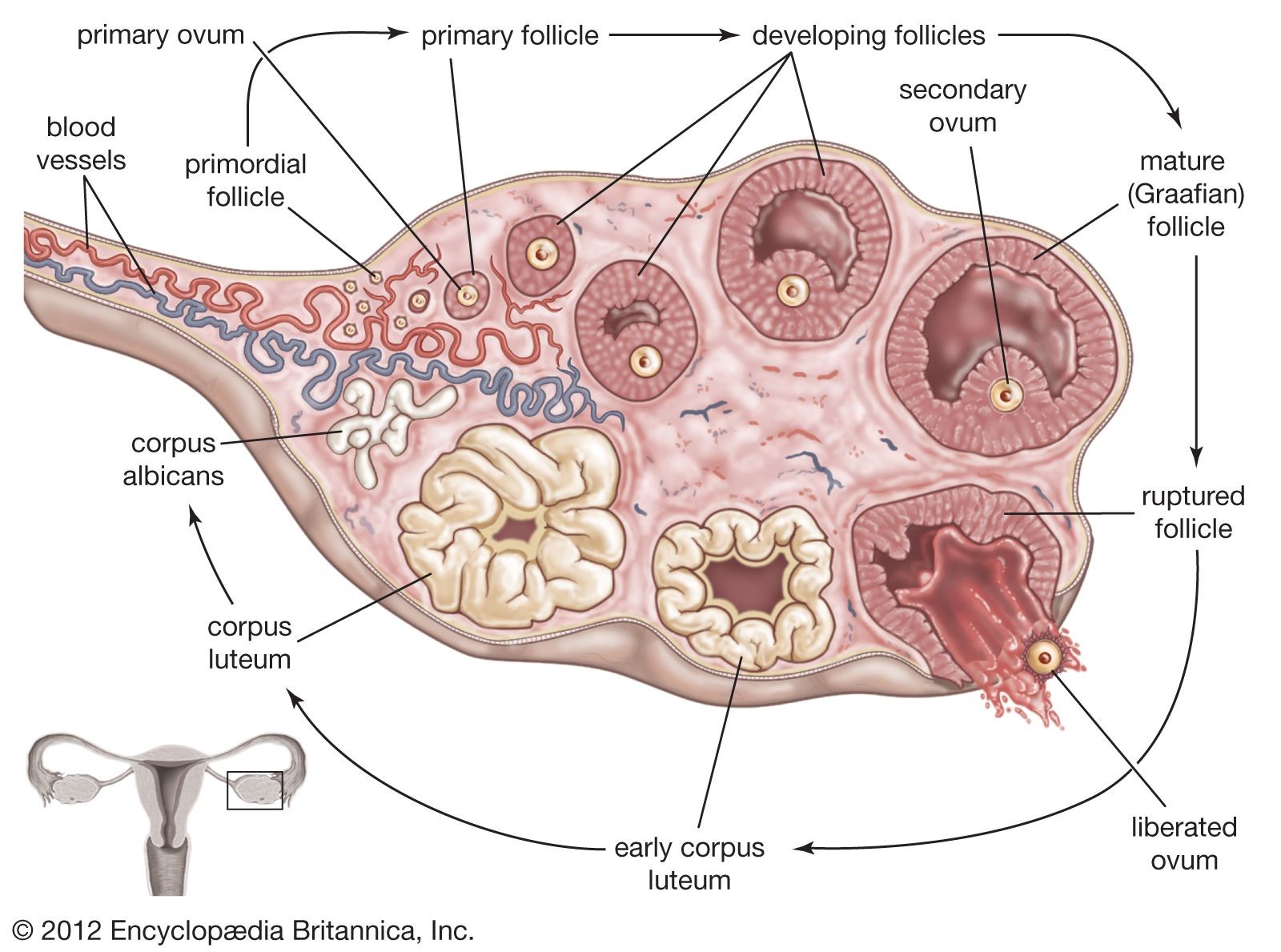
Choice A.
Umbilical cord is not correct because it is a structure that connects the developing fetus to the placenta and provides nutrients and oxygen to the fetus, but does not secrete hormones.
Choice C.
Oviduct is not correct because it is a tube that transports eggs from the ovary to the uterus, but does not secrete hormones.
Choice D.
Oocyte is not correct because it is an immature egg cell, but does not secrete hormones.
Correct Answer is D
Explanation
The cytoskeleton of a cell is comprised of protein fibers that provide structural support and help maintain the shape of the cell.
These protein fibers include microfilaments, intermediate filaments, and microtubules.
Choice A.
Carbohydrates is not the correct answer because carbohydrates are a type of macromolecule that provides energy to cells and are not a component of the cytoskeleton.
Choice B.
Nucleic acids is not the correct answer because nucleic acids are macromolecules that store and transmit genetic information and are not a component of the cytoskeleton.
Choice C.
Lipids is not the correct answer because lipids are a type of macromolecule that makes up cell membranes and are not a component of the cytoskeleton.
Correct Answer is D
Explanation
Proteins.
Proteins are made up of amino acids which are organic molecules that contain both an amine functional group (–NH2) and a carboxylic acid functional group (– COOH).
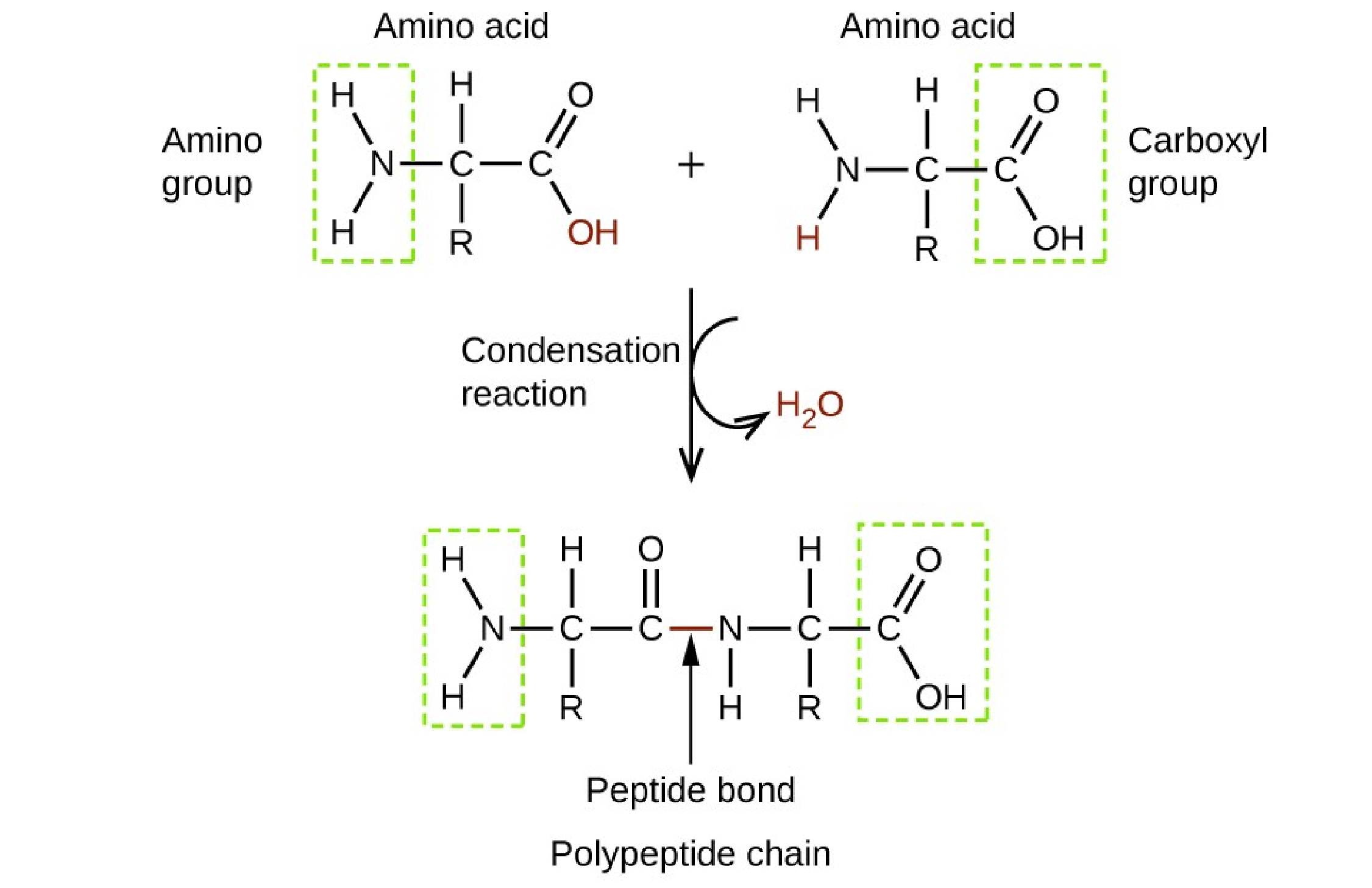 |
Choice A, Lipids, is not the correct answer because lipids are a group of naturally occurring molecules that include fats, waxes, sterols, fat-soluble vitamins, monoglycerides, diglycerides, triglycerides, phospholipids, and others.
They do not contain both an amine and carboxyl group.
Choice B, Chitin, is not the correct answer because chitin is a long-chain polymer of N-acetylglucosamine, a derivative of glucose.
It does not contain both an amine and carboxyl group.
Choice C, Cellulose, is not the correct answer because cellulose is an organic compound with the formula (C6H10O5)n, a polysaccharide consisting of a linear chain of several hundred to many thousands of β(1→4) linked D-glucose units.
It does not contain both an amine and carboxyl group.
Correct Answer is A
Explanation
A myocardial infarction affects the coronary blood vessels of the heart.
A myocardial infarction, commonly known as a heart attack, occurs when blood flow decreases or stops in the coronary artery of the heart, causing damage to the heart muscle 1.
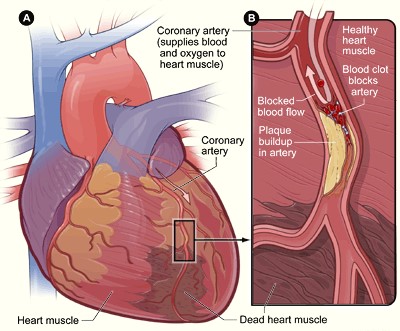
Choice B is incorrect because the aorta is not a blood vessel of the heart.
The aorta is the main artery that carries oxygenated blood from the heart to the rest of the body.
Choice C is incorrect because the pulmonary blood vessels are not affected by a myocardial infarction.
The pulmonary blood vessels carry deoxygenated blood from the heart to the lungs.
Choice D is incorrect because the vena cava is not a blood vessel of the heart.
The vena cava is a large vein that carries deoxygenated blood from the body to the heart.
This question was extracted from the actual TEAS Exam. Ace your TEAS exam with the actual TEAS 7 questions, Start your journey with us today
Visit Naxlex, the Most Trusted TEAS TEST Platform With Guaranteed Pass of 90%.
Money back guarantee if you use our service and fail the actual exam. Option of personalised live tutor on your area of weakness.
